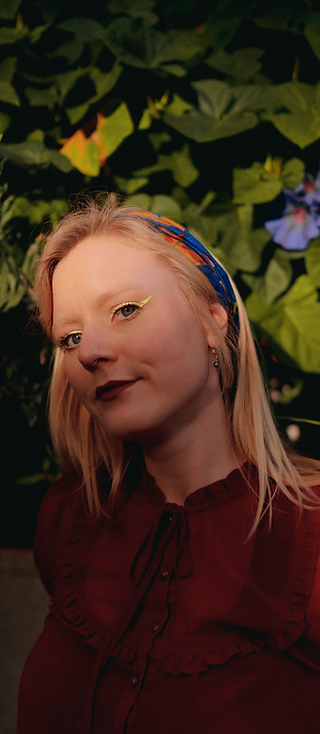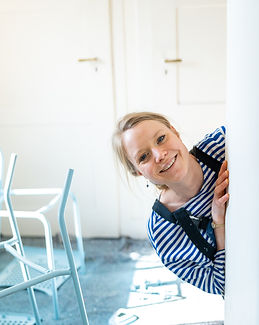
Why "studio knot"?
studio represents more than just a physical workspace—it unites artistic reflection and interdisciplinary exploration; a place where philosophy and craftsmanship meet. Here, not only production takes place, but also thought, discarded, connected, interpreted, and reinvented.
In short: the studio is a workshop, a space for reflection and a laboratory all in one.
Knot - the knot - has its intellectual roots in the textile sector; it refers to techniques such as sewing, tufting and knotting.
Furthermore, it is a symbol of creative tension, a point where thoughts and threads gather, become tangled—and ultimately unravel. When a knot bursts, movement, freedom, and development emerge.
studio knot thus stands for the moment of transformation – when ideas become a form, when processes become design.
Hey,
I am Nora!

I am the Founder of studio knot, my own creative refuge!
As a design and textile engineer, I initially worked for several years in a large international company in the textile industry.
Despite the exciting insights I gained, I lacked the feeling of true effectiveness – the connection between my professional knowledge, my creative impulses, and work that was personally meaningful to me.
I consciously used this time as a starting point – questioned my professional direction, deepened my knowledge in Design and invested my resources to explore new design avenues.
Until I finally took the plunge and created a working environment in which I experience self-efficacy . Today I work as Sustainability manager and managing director of studio knot.
I welcome everyone who joins me on this journey—whether through sharing, interest, collaboration, or quietly reading along. Welcome to studio knot.
Here you can simply say "Hi"!
Ethos

studio knot is a place for thoughtful design, supported by a clear understanding of values.
The focus is on creating not just beautiful things, but ones that are meaningful, functional and designed responsibly – in terms of material, process and effect.
Craftmansship
The focus is on analog, haptic work – as an alternative to digital overload.
Knowledge of materials, craftsmanship, and the sensual experience of surfaces and textures not only open up creative freedom, but also autonomy and independence.
Craftsmanship is not thought of as a nostalgic concept here, but rather as a modern, creative practice.
Responsibility
Design begins with the question of how and what: What materials are used? Where do they come from? Under what conditions are they created – for people, the environment, and the climate?
Short distances, local production, and conscious use of resources form the basis. Because good design isn't just visible—it's tangible and has a lasting impact.
Here you can find out more about it.



Design as a solution
Design as a solution – not as an end in itself.
The focus is on designing functional and everyday objects that can be used and experienced.
It's about finding design answers to real needs – with well-thought-out concepts, sensible materials, and an aesthetic clarity that arises from use.
Aesthetics arise here from logic, material and application.
